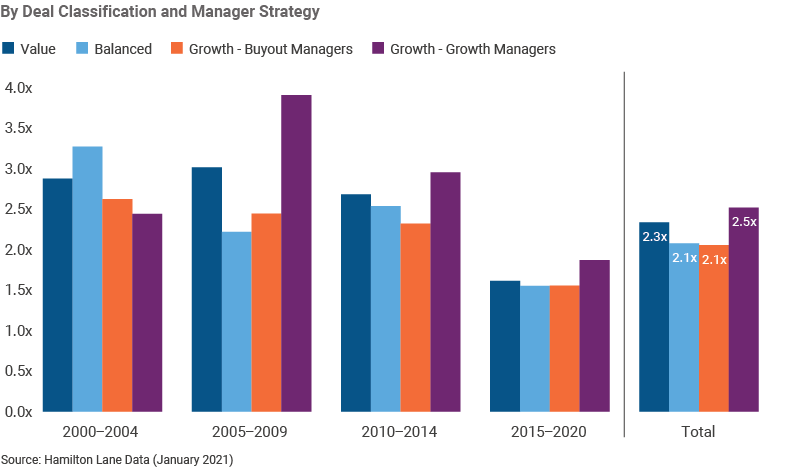Private Markets Due Diligence: Evaluating Evergreen Funds

Our last couple of blog posts – which focused on deal flow, investment types and structural differences – have hopefully provided some useful reference points as you conduct due diligence on evergreen private fund structures. For this blog, we will cover some of the key questions to ask when evaluating evergreen funds, including those related to portfolio construction and liquidity.
Portfolio Management
When it comes to investing in the private markets, one of the biggest challenges tends to be the availability and accuracy of industry data. In public markets, data is plentiful and uniform, which makes things like evaluating attribution, addressing over/under allocation, etc. fairly easy to do with the right software. Unfortunately, this is not the case for private companies. There is no readily-accessible database or service for investors to easily evaluate their private fund allocations – which is important to ensure they aren’t allocating too much or too little to different strategy types, sizes of investments or geographies. Consider, for example, if you want a buyout-focused fund for your clients, but the manager begins shifting its strategy more to growth equity, this is something you would want to know to maintain your target exposure. And, as we wrote earlier this year, that strategy shift can have implications for performance as evidenced in the chart below. (In short, buyout managers who shift to growth-oriented deals tend to underperform growth-focused managers.)
Average TVPIs

TVPI is the ratio of the current value of the investment as a proportion of the amount invested.
In addition, if you have a strategy that is meant to provide broad private markets exposure, you’ll want to make sure it isn’t tilting too heavily into one strategy type, industry or geography as that would essentially turn your fund into a specialty/focused offering.
So, what questions should you be asking providers in this space? Here are several that can give you a good sense of how managers are preventing any drift or concentration:
- What tools do you use to manage the strategy, geographic and industry concentration?
- What do you do if you become over/under allocated in a specific area?
- When making new investments, how much thought goes into the overall portfolio construction versus just being partial to the deal generally?
- How do you assess individual risk/return and its impact on the overall portfolio risk/return targets?
- How do you monitor attribution in the portfolio?
Questions like these are helpful to understand how much thought goes into actually constructing the portfolio. Is it just getting populated with deals, or is there thoughtful consideration and analysis to ensure that each deal fits the mandate of the fund and will help it reach its return/risk targets? Is the manager armed with enough tools to effectively manage the different allocations over time? In addition, is the firm’s deal flow diverse enough to provide sufficient and quality investment opportunities? Asking questions like these will help you understand the process of the fund, but more importantly help uncover the firm’s capabilities in providing the exposure you desire.
Managing Liquidity
Putting illiquid investments inside of a semi-liquid structure is a bit like trying to circle a square. It can be contradictory and difficult to do in an efficient manner while providing the investor experience often promised. Understanding the source and mechanisms for managing liquidity is important as you research this space. There are a few things to consider here:
- Investing frequently, instead of being beholden to a capital call structure, is beneficial to investors, but how does the GP manage incoming assets and deploy them quickly?
- Is the manager able to meet fund redemption requirements consistently?
- How is the manager focusing on minimizing cash drag?
In a typical commingled fund, an investor makes a commitment, and that capital can then be drawn down over multiple years in order to make investments the GP has targeted. In an evergreen structure, the fund typically takes in commitments monthly (amounts of which can vary widely) and then must deploy that capital efficiently. For a fund to do that effectively, the manager must have consistent deal flow to enable them to invest in deals regularly. If deal flow is spotty, that could result in cash accumulating in the portfolio for months at a time, potentially weighing on returns. As you diligence this area of the market, and once you’ve concluded that the manager’s deal flow is strong, here are some good questions to ask:
- How many deals are you allocating to each month?
- How long does it typically take to put the money to work?
(Note: It is unreasonable to think the cash gets deployed as rapidly as it does in public markets, as these deals tend to be much more cumbersome, so make sure to adjust expectations versus public markets. Understanding this will help you assess whether the manager has enough deal flow to deploy capital as well as how effectively they can put that money to work.)
The ability to meet redemption requirements is one of the more challenging components of managing evergreen strategies and, unfortunately, many investors may have had negative experiences in the past. Thus, it is of utmost importance to understand the mechanisms around how a fund intends to meet its quarterly redemption targets. (Refer to our last blog post that discusses the differences between traditional private markets funds, evergreen funds and mutual funds as there are several important distinctions to understand.) In semi-liquid structures that hold illiquid investments, there are generally three ways these funds can meet liquidity requirements:
- Hold cash
- Hold liquid assets other than cash (e.g., ETFs, money market funds, etc.)
- Use portfolio management techniques and tools
Holding cash is one option, but any cash held is obviously not being put to work (which defeats the purpose of allocating to the fund!). Holding liquid assets is another mechanism, but those are typically in public securities, which dilutes the private market exposure these funds are aiming to provide investors. Not only that, but they are also subject to the whims of the market which can potentially increase volatility. That leaves the option of having a robust liquidity management process. This approach tends to require a lot of experience and specialized tools to manage the duration of underlying investments and ensure yielding investments are generating enough cash. Unlike in traditional Private Equity Fund of Funds that consist mostly of primaries (which create greater blind pool, duration and liquidity risk), more liquid vehicles need to effectively manage the delicate balance of maintaining pure private exposure while adequately meeting the liquidity needs investors expect.
The process by which the fund manages commitments and redemptions could result in a significant cash drag, so it is important to understand how the fund is managing these components. If a manager is not adept at this, there is the potential for a performance drag that can add up over time. Funds that hold cash can see a drag on performance, especially in very strong markets. In addition, if a fund uses primaries, there is an additional cash drag as they need to hold assets to meet capital calls of those primary funds. So, as you think about liquidity, here are some potential questions to ask:
- How does the portfolio intend to meet the quarterly redemption requirements?
- If the fund uses portfolio management tools, what is the current rate the portfolio is kicking off to meet requirements?
- If the fund uses cash, does it also use leverage to offset any potential cash drag? If so, how much?
- If the fund uses ETFs, money market funds, etc. to manage liquidity, what is the max you would hold in these assets? What is the average?
- For portfolio management, what mechanisms do you have in place in the event the portfolio does not kick off enough to meet redemptions?
- For portfolio management, how long have you been implementing this approach? What tools do you use to do so?
In the next and final blog in this series, we will address valuation and deal allocation, as well as fees and what questions you should be asking as you conduct due diligence.
The views expressed are those of the author at the time created. These views are subject to change at any time based on market and other conditions, and Hamilton Lane, disclaims any responsibility to update such views. No forecasts can be guaranteed. These views may not be relied upon as investment advice or as an indication of trading intent on behalf of any Hamilton Lane portfolio.
This Hamilton Lane blog is not intended to provide investment advice. This blog should not be construed as an offer to sell, a solicitation of an offer to buy, or a recommendation for any security by Hamilton Lane, or any third-party. You are solely responsible for determining whether any investment, investment strategy, security or related transaction is appropriate for you based on your personal investment objectives, financial circumstances and risk tolerance. You should consult your legal or tax professional regarding your specific situation.